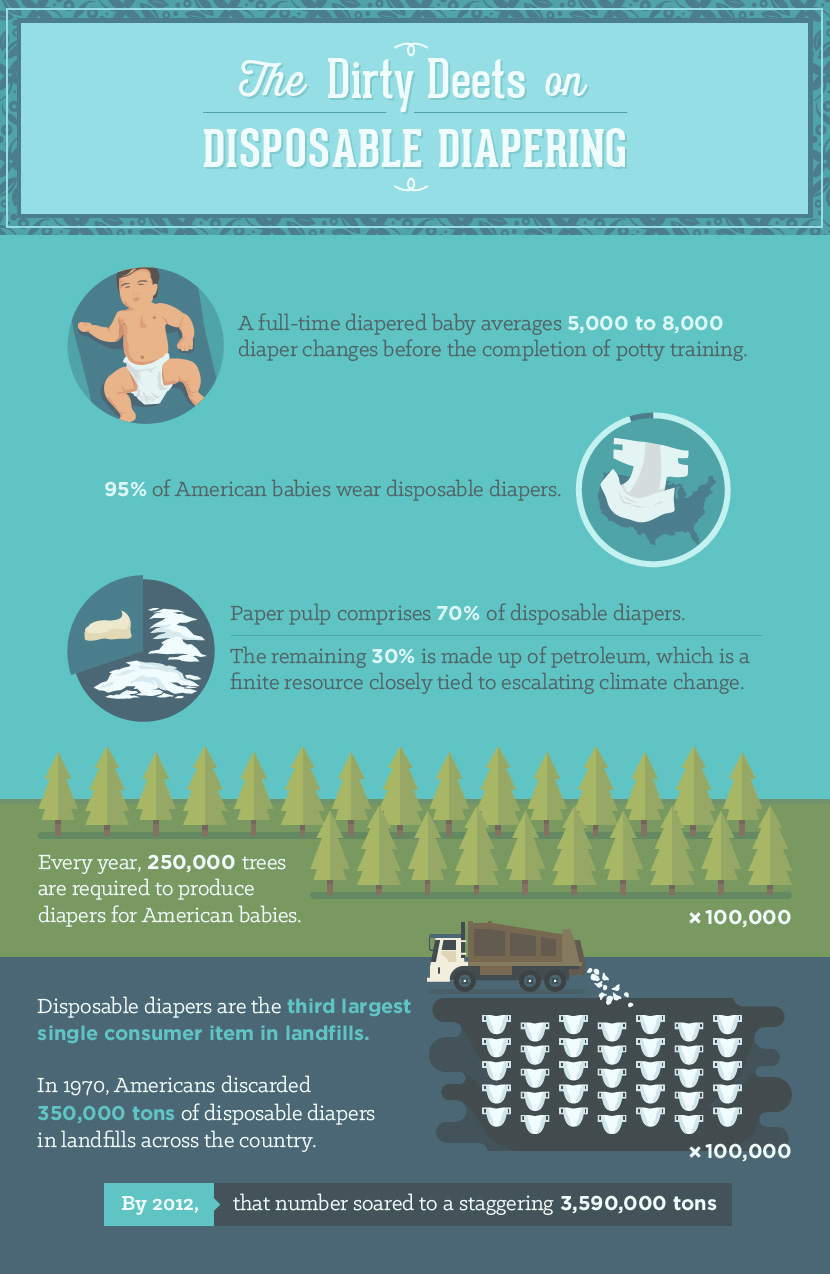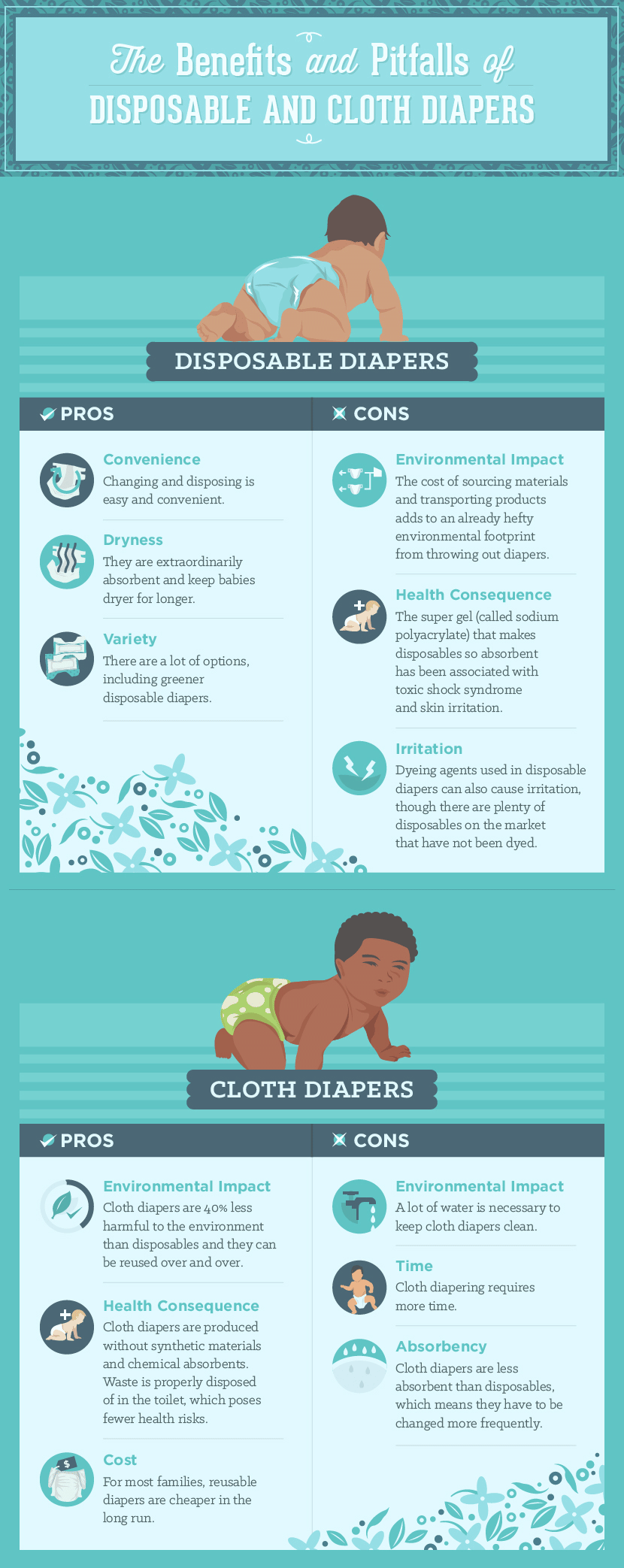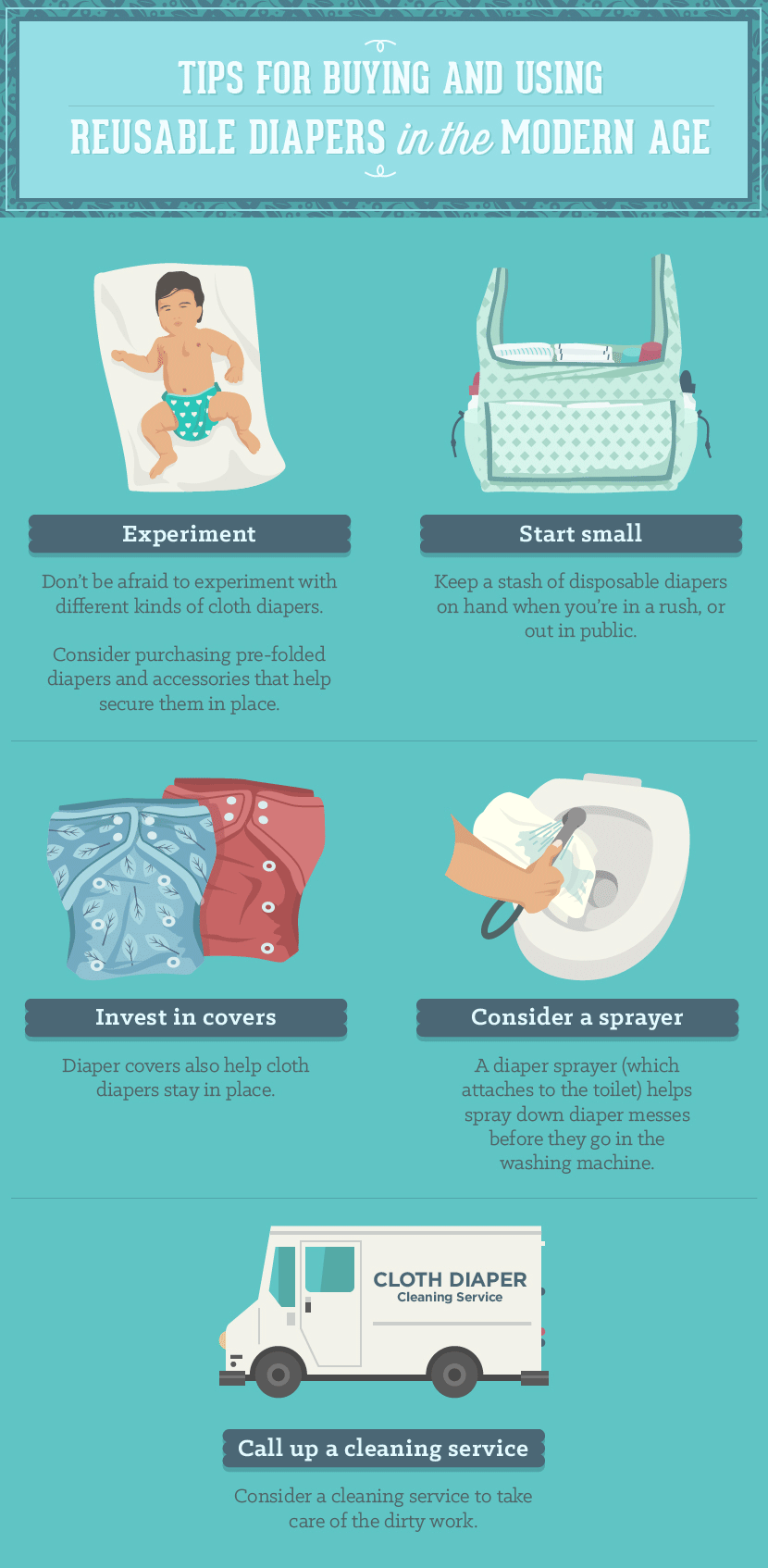Diaper Debacle: Green Diaper Basics
Disposable diapers cause a pile of environmental problems, and there are no easy solutions.
Consider this: in America alone, nearly four million babies are born every year.
That is four million babies who each are likely to use up to 8,000 throwaway
diapers before they are potty trained.
In 1970, Americans discarded 350,000 tons of disposable diapers in landfills across the country. By 2012, that number
soared to a staggering 3,590,000 tons. More than nine out of 10 parents crowd landfills
with dirty plastics that will not biodegrade for 500 years. http://www.webmd.com/parenting/baby/diapering-a-baby-13/diaper-choices
Environmental Impact
The sheer number of diapers piling up is reason enough for concern, but it is important to break down their material constituents to
appreciate the environmental implications of this modern marvel. Trees, for starters: 250,000 trees are required annually to produce diapers
for American babies.http://www.diaperfreebaby.org/index.php?module=pagemaster&PAGE_user_op=view_page&PAGE_id=119&MMN_position=278:278 And when the wood pulp from these trees is bleached to make disposable diapers more esthetically pleasing, it produces
a low concentration of dioxins, a known carcinogen that could lead to infertility.http://www.toxipedia.org/display/toxipedia/Diapers
Cotton is also a prevalent component of both diapers and traditional cloth nappies; its cultivation is responsible for roughly 10 percent
of the world’s pesticide use.http://www.diaperfreebaby.org/index.php?module=pagemaster&PAGE_user_op=view_page&PAGE_id=119&MMN_position=278:278
Then there is the issue of throwing human waste into the garbage, which is technically illegal. However, according
to the EPA, diapers fall under the municipal solid waste category and are, therefore, safe to
dispose of in municipal landfills.http://www.webmd.com/parenting/baby/diapering-a-baby-13/diaper-choices
A disposable diaper is 70 percent paper pulp. The remaining 30 percent is made from petroleum, which is a finite resource and one whose combustion is closely tied with escalating climate change.
Cloth diapers come with their own environmental consequences. Depending on how and where they are washed (either at home or at a diaper
service facility), one load of dirty cloth diapers requires up to 50 gallons of water to be
sufficiently hygienic for reuse.http://www.extension.umn.edu/environment/water/diaper-choices/
In parts of the world where water is scarce, such as California, this is a terrible misuse of a precious resource.

The Necessity of Diapering
Not using some kind of diaper is not an option. Just ask the babies of Peshawar, Pakistan, who suffer from high rates of acute childhood
gastroenteritis: researchers point to insufficient diaper use as a chief cause of this preventable disease.http://journals.plos.org/plosone/article?id=10.1371/journal.pone.0119069
Just 45 percent of children studied wore absorbent disposable diapers that were changed infrequently; 40 percent wore cloth diapers, and 15 percent wore no diapers at
all. When feces are free to leak onto shared surfaces, harmful bacteria spreads,
which can cause often-fatal sickness.http://water.org/water-crisis/water-facts/children/
While this is much less likely to happen in the developed world, these statistics help to illustrate why the diaper conundrum
is so complex. By using diapers, we squander natural resources and pollute the Earth, but the alternative is grim. The
onus is on parents to evaluate the kinds of diapers available and choose the option that makes the most sense for their household.
Fortunately, the modern American parent has more choices than parents did even five years ago. From greener, chlorine-free mainstream
disposables to cloth nappies and even compostable diapers, each brand comes with its own benefits and pitfalls. Since working out these
details can be time-consuming, we have simplified the task. Here is a quick comparison of disposable versus reusable diapers, in addition to a brief look at other green options.

Disposable Diapers
Pros:
Convenience
In today’s frantically paced world, where both parents often work long hours and single parenting is on the rise, it is hard to deny the convenience and ease of disposable diapers.
Dryness
Because of their extraordinary absorbency, disposables keep bums drier for longer if they are changed regularly. This results in fewer rashes and a happier baby.
Cost
Depending on how much parents earn (and therefore the cost of their labor), disposables can actually be less expensive
than reusable cloth diapers when factoring in the time required to keep them clean.http://www.extension.umn.edu/environment/water/diaper-choices/
Variety
Parents do not have to settle for mainstream brands thanks to the emergence of conscientious
manufacturers concerned with the well-being of Americans and their children.http://www.naty.com/
Cons:
Cloth Diapers
Pros:
Environmental Impact
Cloth diapers are 40 percent less harmful to the environment than disposables.http://randd.defra.gov.uk/Document.aspx?Document=WR0705_7589_FRP.pdf This life-cycle assessment evaluates everything from sourcing
natural materials to eventual disposal. Plus, they can be reused over and over, resulting in less material waste. New organic cotton, hemp,
or bamboo cloth nappies have a friendlier relationship with our natural resources thanks in part to the lower amount of pesticide used.
Moreover, hemp and bamboo are both rapidly renewable resources.http://www.kellyscloset.com/Organic-or-Natural-Fiber-Diapers_c_1040.html
Health Consequences
Because cloth diapers are produced without synthetic materials and chemical absorbents, they pose fewer health risks, as long as
they are changed regularly. Plus, the waste is properly disposed of in the toilet instead of thrown in the trash, which poses fewer health risks.
Cost
For most families, reusable diapers are cheaper in the long run.
Convenience
New diaper services in select regions collect and clean cloth diapers,
taking the dirty work out of parents’ hands.https://www.diaperkind.com/
Cons:
Environmental Impact
The extent of material use and the energy and water associated with washing reusable diapers is the most obvious pitfall.
Time
Time is a major factor for many modern parents, who are already sleep-deprived from having a new baby at home. If one or more parents have the luxury to stay home, this may be less of a factor.
Absorbency
Cloth diapers are less absorbent than disposables, which means they have to be changed more frequently.
Green Disposable Diaper Options

Chlorine-Free
Progressive, environmentally conscious parents now have the option to purchase chlorine-free disposables, though
it is important to pay attention to the materials used: even some “responsible” brands sneak in brown pigments as a
marketing gimmick to make diapers look more natural.http://www.davidsuzuki.org/publications/downloads/Diaper-Graph.pdf
Flushables
Certain brands offer flushable inserts for cloth diapers, which are compatible with American waste systems
(families with older plumbing systems should not flush anything other than toilet paper). If you choose this route, follow the manufacturer’s directions very carefully.
Compostable Diapers
Compostable Diapers are an environmentalist’s dream: Certain businesses deliver cotton diapers neatly stored in a compostable bag to municipal
solid waste compost facilities, where the diapers compost within a matter of months. The process completely disinfects them, so compostable diapers do not spread harmful pathogens.
Conclusion
Babies are hard work, so nobody is going to judge you if you sometimes run down to a drug store to pick up an easy bag of disposables
to keep your baby clean and dry. However, it is easier than ever to look beyond the old disposable, and we hope this guide will give you inspiration.
Embed the article on your site

